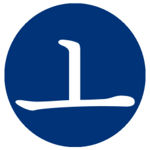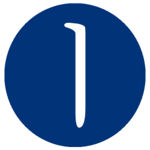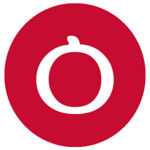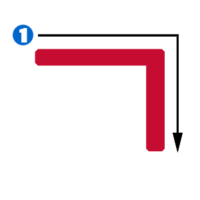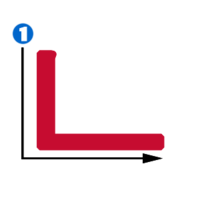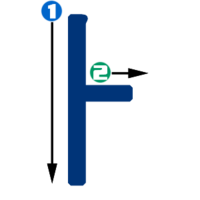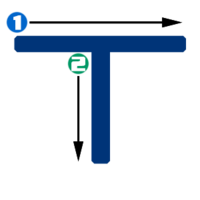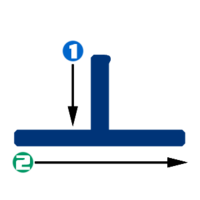Difference between revisions of "Hangeul step 2"
DigitalSoju (Talk | contribs) (temp) |
DigitalSoju (Talk | contribs) |
||
| (50 intermediate revisions by 4 users not shown) | |||
| Line 1: | Line 1: | ||
{{HangeulTop}} | {{HangeulTop}} | ||
| − | |||
| − | |||
| − | |||
| − | == | + | {| border=0 style="text-align:center; margin-left: auto; margin-right: auto;" |
| + | |- | ||
| + | | [[File:Back.png|link=Hangeul step 1|150px]] | ||
| + | | [[File:Next.png|link=Hangeul step 3|150px]] | ||
| + | |} | ||
| + | ==Did you jump to step 2?== | ||
| + | Did you skip [[Hangeul step 1|step 1]] because you were eager to just start learning the alphabet? Don't do it! We recommend you you go back to [[Hangeul step 1|step 1]] and read the general information on Hangeul, there are some important details that will help you from being confused later. | ||
| − | + | ==Introduction== | |
| − | + | [[File:Syllable blocks1.png|right|thumb|250px|A consonant paired with a horizontal vowel and a consonant paired with a vertical vowel]] | |
| − | + | We will introduce a consonant and vowel in pairs since consonants cannot be pronounced without the help of a vowel. Steps 2 through 4 are all either a consonant paired with a horizontal vowel or a consonant paired with a vertical vowel. | |
| − | + | ||
| − | + | In this lesson, you will learn: | |
| − | + | *Consonants: [[ㄱ]], [[ㄴ]], [[ㅁ]], [[ㄷ]], [[ㅇ]] | |
| − | + | *Vowels: [[ㅏ]], [[ㅜ]], [[ㅗ]], [[ㅣ]] | |
| − | + | ||
| − | + | ||
| − | + | ||
| − | + | ||
| − | + | ||
| − | + | ||
| − | + | ||
| + | Also note that some of these files are set to loop, so you must manually stop the files yourself. | ||
| + | {{-}} | ||
| + | ==Step 2== | ||
{{Hangeul intro table | {{Hangeul intro table | ||
|bgcolor = {{kred}} | |bgcolor = {{kred}} | ||
| − | | | + | |Consonant = ㄱ |
| − | |image = | + | |Cons image = ㄱ.jpg |
| − | |text = | + | |Cons text = This is pronounced like a mix between a G and a K at the beginning of a word. It is unvoiced like a K, but unaspirated like a G. Think of the <k> in <skill>. However, when found between vowels, the sound is voiced and makes a /g/ sound. IPA symbol: /k/ /g/. For full information about this letter, see [[ㄱ]]. |
| + | |Vowel = ㅏ | ||
| + | |Vowel image = ㅏ.jpg | ||
| + | |Vowel text = This is a vertical vowel and written to the right of the consonant. Think of the <a> in <art> or the French <a> in <ami>. IPA symbol: /a/. For full information about this letter, see [[ㅏ]]. | ||
| + | |Vowel audio description1 = Male | ||
| + | |Vowel audio1 = <flashmp3>a H.mp3|leftbg=003478|rightbg=c60c30|lefticon=ffffff|righticon=ffffff</flashmp3> | ||
| + | |Vowel audio description2 = Female | ||
| + | |Vowel audio2 = <flashmp3>a M.mp3|leftbg=003478|rightbg=c60c30|lefticon=ffffff|righticon=ffffff</flashmp3> | ||
}} | }} | ||
| + | |||
| + | {| class="wikitable" style="text-align:center; margin-left: auto; margin-right: auto; font-size:300%;" | ||
| + | |-style="font-size:70%" | ||
| + | !colspan="2"|Practice | ||
| + | |- | ||
| + | | 가 | ||
| + | | <flashmp3>ga H.mp3, ga M.mp3|leftbg=003478|rightbg=c60c30|lefticon=ffffff|righticon=ffffff|loop=yes</flashmp3> | ||
| + | |} | ||
| + | |||
| + | |||
{{Hangeul intro table | {{Hangeul intro table | ||
|bgcolor = {{kred}} | |bgcolor = {{kred}} | ||
| − | | | + | |Consonant = ㄴ |
| − | |image = | + | |Cons image = ㄴ.jpg |
| − | |text = | + | |Cons text = This sound is the same as the N sound in English. IPA symbol: /n/. For full information about this letter, see [[ㄴ]]. |
| + | |Vowel = ㅜ | ||
| + | |Vowel image = ㅜ.jpg | ||
| + | |Vowel text = This sound makes an "ooh" sound, similar to 'm'''oo'''n' or 'bl'''ue'''' or the U sound in Spanish (i.e. '''u'''sted in "usted"). This is a horizontal vowel and written below the consonant. IPA symbol: /u/. For full information about this letter, see [[ㅜ]]. | ||
| + | |Vowel audio description1 = Male | ||
| + | |Vowel audio1 = <flashmp3>u H.mp3|leftbg=003478|rightbg=c60c30|lefticon=ffffff|righticon=ffffff</flashmp3> | ||
| + | |Vowel audio description2 = Female | ||
| + | |Vowel audio2 = <flashmp3>u M.mp3|leftbg=003478|rightbg=c60c30|lefticon=ffffff|righticon=ffffff</flashmp3> | ||
}} | }} | ||
| + | |||
| + | {| class="wikitable" style="text-align:center; margin-left: auto; margin-right: auto; font-size:300%;" | ||
| + | |-style="font-size:70%" | ||
| + | !colspan="2"|Practice | ||
| + | |- | ||
| + | | 누 | ||
| + | | <flashmp3>nu H.mp3, nu M.mp3|leftbg=003478|rightbg=c60c30|lefticon=ffffff|righticon=ffffff|loop=yes</flashmp3> | ||
| + | |- | ||
| + | | 나 | ||
| + | | <flashmp3>na H.mp3, na M.mp3|leftbg=003478|rightbg=c60c30|lefticon=ffffff|righticon=ffffff|loop=yes</flashmp3> | ||
| + | |- | ||
| + | | 구 | ||
| + | | <flashmp3>gu H.mp3, gu M.mp3|leftbg=003478|rightbg=c60c30|lefticon=ffffff|righticon=ffffff|loop=yes</flashmp3> | ||
| + | |} | ||
| + | |||
| + | |||
{{Hangeul intro table | {{Hangeul intro table | ||
|bgcolor = {{kred}} | |bgcolor = {{kred}} | ||
| − | | | + | |Consonant = ㅁ |
| − | |image = ㅁ.jpg | + | |Cons image = ㅁ.jpg |
| − | |text = | + | |Cons text = This sound is the same as the M sound in English. IPA symbol: /m/. For full information about this letter, see [[ㅁ]]. |
| + | |Vowel = ㅗ | ||
| + | |Vowel image = ㅗ.jpg | ||
| + | |Vowel text = Think of the Canadian or Scottish O. Many speakers do not say aw-oo or o-oo like Americans and do not say ay-oo like Londoners. This is a straight "o" sound, tight but not as tight as the ㅜ. This is a horizontal vowel and written below the consonant. IPA symbol: /o/. For full information about this letter, see [[ㅗ]]. | ||
| + | |Vowel audio description1 = Male | ||
| + | |Vowel audio1 = <flashmp3>o H.mp3|leftbg=003478|rightbg=c60c30|lefticon=ffffff|righticon=ffffff</flashmp3> | ||
| + | |Vowel audio description2 = Female | ||
| + | |Vowel audio2 = <flashmp3>o M.mp3|leftbg=003478|rightbg=c60c30|lefticon=ffffff|righticon=ffffff</flashmp3> | ||
}} | }} | ||
| + | |||
| + | {| class="wikitable" style="text-align:center; margin-left: auto; margin-right: auto; font-size:300%;" | ||
| + | |-style="font-size:70%" | ||
| + | !colspan="2"|Practice | ||
| + | |- | ||
| + | | 모 | ||
| + | | <flashmp3>mo H.mp3, mo M.mp3|leftbg=003478|rightbg=c60c30|lefticon=ffffff|righticon=ffffff|loop=yes</flashmp3> | ||
| + | |- | ||
| + | | 마 | ||
| + | | <flashmp3>ma H.mp3, ma M.mp3|leftbg=003478|rightbg=c60c30|lefticon=ffffff|righticon=ffffff|loop=yes</flashmp3> | ||
| + | |- | ||
| + | | 무 | ||
| + | | <flashmp3>mu H.mp3, mu M.mp3|leftbg=003478|rightbg=c60c30|lefticon=ffffff|righticon=ffffff|loop=yes</flashmp3> | ||
| + | |- | ||
| + | | 고 | ||
| + | | <flashmp3>go H.mp3, go M.mp3|leftbg=003478|rightbg=c60c30|lefticon=ffffff|righticon=ffffff|loop=yes</flashmp3> | ||
| + | |- | ||
| + | | 노 | ||
| + | | <flashmp3>no H.mp3, no M.mp3|leftbg=003478|rightbg=c60c30|lefticon=ffffff|righticon=ffffff|loop=yes</flashmp3> | ||
| + | |} | ||
| + | |||
{{Hangeul intro table | {{Hangeul intro table | ||
|bgcolor = {{kred}} | |bgcolor = {{kred}} | ||
| − | | | + | |Consonant = ㄷ |
| − | |image = | + | |Cons image = ㄷ.jpg |
| − | |text = | + | |Cons text = This is pronounced like a mix between the sounds of a T and a D at the beginning of a word. It is voiceless like a T and unaspirated like a D. Think of the <t> in <stop>. However, when found between vowels, the sound is voiced and makes a /d/ sound. IPA symbol: /t/ /d/. For full information about this letter, see [[ㄷ]]. |
| + | |Vowel = ㅣ | ||
| + | |Vowel image = ㅣ.jpg | ||
| + | |Vowel text = This sound is ''similar'' to the 'ee' sound in 's'''ee'''' or 'fr'''ee'''.' A little quicker though, more like the <y> in <happy> but not the Scottish "happay." This is a vertical vowel and written to the right of the consonant. IPA symbol: /i/. For full information about this letter, see [[ㅣ]]. | ||
| + | |Vowel audio description1 = Male | ||
| + | |Vowel audio1 = <flashmp3>i H.mp3|leftbg=003478|rightbg=c60c30|lefticon=ffffff|righticon=ffffff</flashmp3> | ||
| + | |Vowel audio description2 = Female | ||
| + | |Vowel audio2 = <flashmp3>i M.mp3|leftbg=003478|rightbg=c60c30|lefticon=ffffff|righticon=ffffff</flashmp3> | ||
}} | }} | ||
| − | == | + | {| class="wikitable" style="text-align:center; margin-left: auto; margin-right: auto; font-size:300%;" |
| + | |-style="font-size:70%" | ||
| + | !colspan="2"|Practice | ||
| + | |- | ||
| + | | 디 | ||
| + | | <flashmp3>di H.mp3, di M.mp3|leftbg=003478|rightbg=c60c30|lefticon=ffffff|righticon=ffffff|loop=yes</flashmp3> | ||
| + | |- | ||
| + | | 다 | ||
| + | | <flashmp3>da H.mp3, da M.mp3|leftbg=003478|rightbg=c60c30|lefticon=ffffff|righticon=ffffff|loop=yes</flashmp3> | ||
| + | |- | ||
| + | | 두 | ||
| + | | <flashmp3>du H.mp3, du M.mp3|leftbg=003478|rightbg=c60c30|lefticon=ffffff|righticon=ffffff|loop=yes</flashmp3> | ||
| + | |- | ||
| + | | 도 | ||
| + | | <flashmp3>do H.mp3, do M.mp3|leftbg=003478|rightbg=c60c30|lefticon=ffffff|righticon=ffffff|loop=yes</flashmp3> | ||
| + | |- | ||
| + | | 기 | ||
| + | | <flashmp3>gi H.mp3, gi M.mp3|leftbg=003478|rightbg=c60c30|lefticon=ffffff|righticon=ffffff|loop=yes</flashmp3> | ||
| + | |- | ||
| + | | 니 | ||
| + | | <flashmp3>ni H.mp3, ni M.mp3|leftbg=003478|rightbg=c60c30|lefticon=ffffff|righticon=ffffff|loop=yes</flashmp3> | ||
| + | |- | ||
| + | | 미 | ||
| + | | <flashmp3>mi H.mp3, mi M.mp3|leftbg=003478|rightbg=c60c30|lefticon=ffffff|righticon=ffffff|loop=yes</flashmp3> | ||
| + | |} | ||
| − | |||
| − | |||
| − | |||
| − | |||
| − | |||
| − | |||
| − | {{Hangeul intro table | + | {{Hangeul intro table extra |
| − | | | + | |char = ㅇ (consonant) |
| − | | | + | |Image = ㅇ.jpg |
| − | | | + | |Text = ㅇ represents no sound when found in the initial position of a syllable. Instead, it simply acts as a placeholder since <u>vowels cannot be written by themselves</u>. However, if ㅇ is in the final (bottom) position, it makes an NG sound, eg 'si'''ng'''' or 'wro'''ng'''', but these final position sounds will not be discussed until [[Hangeul_step_5|step 5]] of this lesson. For now, think of it as a placeholder for a consonant when only a vowel sound must be written. IPA symbol: /./ /ŋ/. For full information about this letter, see [[ㅇ]]. <!--Insert picture--> |
| − | | | + | |Bgcolor = {{Kred}} |
| + | |Audio description1 = | ||
| + | |Audio1 = | ||
| + | |Audio description2 = | ||
| + | |Audio2 = | ||
}} | }} | ||
| − | { | + | {| class="wikitable" style="text-align:center; margin-left: auto; margin-right: auto; font-size:300%;" |
| − | | | + | |-style="font-size:70%" |
| − | | | + | !colspan="2"|Practice |
| − | | | + | |- |
| − | | | + | | 아 |
| − | + | | <flashmp3>a H.mp3, a M.mp3|leftbg=003478|rightbg=c60c30|lefticon=ffffff|righticon=ffffff|loop=yes</flashmp3> | |
| + | |- | ||
| + | | 우 | ||
| + | | <flashmp3>u H.mp3, u M.mp3|leftbg=003478|rightbg=c60c30|lefticon=ffffff|righticon=ffffff|loop=yes</flashmp3> | ||
| + | |- | ||
| + | | 오 | ||
| + | | <flashmp3>o H.mp3, o M.mp3|leftbg=003478|rightbg=c60c30|lefticon=ffffff|righticon=ffffff|loop=yes</flashmp3> | ||
| + | |- | ||
| + | | 이 | ||
| + | | <flashmp3>i H.mp3, i M.mp3|leftbg=003478|rightbg=c60c30|lefticon=ffffff|righticon=ffffff|loop=yes</flashmp3> | ||
| + | |- | ||
| + | |} | ||
| − | { | + | ==Real Examples== |
| − | | | + | {| class="wikitable" style="text-align:center; margin-left: auto; margin-right: auto;" |
| − | | | + | |- |
| − | | | + | ! Word !! Audio |
| − | | | + | |- |
| − | } | + | | 가구 (furniture) |
| + | | <flashmp3>gagu H.mp3, gagu M.mp3|leftbg=003478|rightbg=c60c30|lefticon=ffffff|righticon=ffffff|loop=yes</flashmp3> | ||
| + | |- | ||
| + | | 가나다 (Korean alphabet, i.e. abc) | ||
| + | | <flashmp3>ganada H.mp3, ganada M.mp3|leftbg=003478|rightbg=c60c30|lefticon=ffffff|righticon=ffffff|loop=yes</flashmp3> | ||
| + | |- | ||
| + | | 가다 (to go) | ||
| + | | <flashmp3>gada H.mp3, gada M.mp3|leftbg=003478|rightbg=c60c30|lefticon=ffffff|righticon=ffffff|loop=yes</flashmp3> | ||
| + | |- | ||
| + | | 가두다 (to lock in) | ||
| + | | <flashmp3>gaduda H.mp3, gaduda M.mp3|leftbg=003478|rightbg=c60c30|lefticon=ffffff|righticon=ffffff|loop=yes</flashmp3> | ||
| + | |- | ||
| + | | 고구마 (sweet potato) | ||
| + | | <flashmp3>goguma H.mp3, goguma M.mp3|leftbg=003478|rightbg=c60c30|lefticon=ffffff|righticon=ffffff|loop=yes</flashmp3> | ||
| + | |- | ||
| + | | 고기 (meat) | ||
| + | | <flashmp3>gogi H.mp3, gogi M.mp3|leftbg=003478|rightbg=c60c30|lefticon=ffffff|righticon=ffffff|loop=yes</flashmp3> | ||
| + | |- | ||
| + | | 고모 (father's sister) <!-- also known as 'aunt'? ... --> | ||
| + | | <flashmp3>gomo H.mp3, gomo M.mp3|leftbg=003478|rightbg=c60c30|lefticon=ffffff|righticon=ffffff|loop=yes</flashmp3> | ||
| + | |- | ||
| + | | 구두 (dress shoes) | ||
| + | | <flashmp3>gudu H.mp3, gudu M.mp3|leftbg=003478|rightbg=c60c30|lefticon=ffffff|righticon=ffffff|loop=yes</flashmp3> | ||
| + | |- | ||
| + | | 기도 (prayer) | ||
| + | | <flashmp3>gido H.mp3, gido M.mp3|leftbg=003478|rightbg=c60c30|lefticon=ffffff|righticon=ffffff|loop=yes</flashmp3> | ||
| + | |- | ||
| + | | 나가다 (go out) | ||
| + | | <flashmp3>nagada H.mp3, nagada M.mp3|leftbg=003478|rightbg=c60c30|lefticon=ffffff|righticon=ffffff|loop=yes</flashmp3> | ||
| + | |- | ||
| + | | 나누다 (to divide) | ||
| + | | <flashmp3>Nanuda H.mp3, Nanuda M.mp3|leftbg=003478|rightbg=c60c30|lefticon=ffffff|righticon=ffffff|loop=yes</flashmp3> | ||
| + | |- | ||
| + | | 나무 (tree) | ||
| + | | <flashmp3>Namu H.mp3, Namu M.mp3|leftbg=003478|rightbg=c60c30|lefticon=ffffff|righticon=ffffff|loop=yes</flashmp3> | ||
| + | |- | ||
| + | | 나오다 (to come out) | ||
| + | | <flashmp3>Naoda H.mp3, Naoda M.mp3|leftbg=003478|rightbg=c60c30|lefticon=ffffff|righticon=ffffff|loop=yes</flashmp3> | ||
| + | |- | ||
| + | | 나이 (age) | ||
| + | | <flashmp3>nai H.mp3, nai M.mp3|leftbg=003478|rightbg=c60c30|lefticon=ffffff|righticon=ffffff|loop=yes</flashmp3> | ||
| + | |- | ||
| + | | 누가 (who) | ||
| + | | <flashmp3>nuga H.mp3, nuga M.mp3|leftbg=003478|rightbg=c60c30|lefticon=ffffff|righticon=ffffff|loop=yes</flashmp3> | ||
| + | |- | ||
| + | | 누구 (who) | ||
| + | | <flashmp3>nugu H.mp3, nugu M.mp3|leftbg=003478|rightbg=c60c30|lefticon=ffffff|righticon=ffffff|loop=yes</flashmp3> | ||
| + | |- | ||
| + | | 누나 (older sister) | ||
| + | | <flashmp3>nuna H.mp3, nuna M.mp3|leftbg=003478|rightbg=c60c30|lefticon=ffffff|righticon=ffffff|loop=yes</flashmp3> | ||
| + | |- | ||
| + | | 다가가다 (approach to someone) | ||
| + | | <flashmp3>dagagada H.mp3, dagagada M.mp3|leftbg=003478|rightbg=c60c30|lefticon=ffffff|righticon=ffffff|loop=yes</flashmp3> | ||
| + | |- | ||
| + | | 다니다 (to go to, work, school etc) | ||
| + | | <flashmp3>danida H.mp3, danida M.mp3|leftbg=003478|rightbg=c60c30|lefticon=ffffff|righticon=ffffff|loop=yes</flashmp3> | ||
| + | |- | ||
| + | | 도구 (instrument,tool) | ||
| + | | <flashmp3>dogu H.mp3, dogu M.mp3|leftbg=003478|rightbg=c60c30|lefticon=ffffff|righticon=ffffff|loop=yes</flashmp3> | ||
| + | |- | ||
| + | | 마다 (every) | ||
| + | | <flashmp3>mada H.mp3, mada M.mp3|leftbg=003478|rightbg=c60c30|lefticon=ffffff|righticon=ffffff|loop=yes</flashmp3> | ||
| + | |- | ||
| + | | 마디 (joint, knot) | ||
| + | | <flashmp3>madi H.mp3, madi M.mp3|leftbg=003478|rightbg=c60c30|lefticon=ffffff|righticon=ffffff|loop=yes</flashmp3> | ||
| + | |- | ||
| + | | 모기 (mosquito) | ||
| + | | <flashmp3>mogi H.mp3, mogi M.mp3|leftbg=003478|rightbg=c60c30|lefticon=ffffff|righticon=ffffff|loop=yes</flashmp3> | ||
| + | |- | ||
| + | | 아기 (baby) | ||
| + | | <flashmp3>agi H.mp3, agi M.mp3|leftbg=003478|rightbg=c60c30|lefticon=ffffff|righticon=ffffff|loop=yes</flashmp3> | ||
| + | |- | ||
| + | | 아마도 (maybe,perhaps) | ||
| + | | <flashmp3>amado H.mp3, amado M.mp3|leftbg=003478|rightbg=c60c30|lefticon=ffffff|righticon=ffffff|loop=yes</flashmp3> | ||
| + | |- | ||
| + | | 아우 (man's younger brother-but not used anymore) | ||
| + | | <flashmp3>au H.mp3, au M.mp3|leftbg=003478|rightbg=c60c30|lefticon=ffffff|righticon=ffffff|loop=yes</flashmp3> | ||
| + | |- | ||
| + | | 아이 (child) | ||
| + | | <flashmp3>ai H.mp3, ai M.mp3|leftbg=003478|rightbg=c60c30|lefticon=ffffff|righticon=ffffff|loop=yes</flashmp3> | ||
| + | |- | ||
| + | | 오다 (to come) | ||
| + | | <flashmp3>oda H.mp3, oda M.mp3|leftbg=003478|rightbg=c60c30|lefticon=ffffff|righticon=ffffff|loop=yes</flashmp3> | ||
| + | |- | ||
| + | | 오이 (cucumber) | ||
| + | | <flashmp3>oi H.mp3, oi M.mp3|leftbg=003478|rightbg=c60c30|lefticon=ffffff|righticon=ffffff|loop=yes</flashmp3> | ||
| + | |- | ||
| + | | 이기다 (to win) | ||
| + | | <flashmp3>igida H.mp3, igida M.mp3|leftbg=003478|rightbg=c60c30|lefticon=ffffff|righticon=ffffff|loop=yes</flashmp3> | ||
| + | |- | ||
| + | | 이모 (mother's sister) | ||
| + | | <flashmp3>imo H.mp3, imo M.mp3|leftbg=003478|rightbg=c60c30|lefticon=ffffff|righticon=ffffff|loop=yes</flashmp3> | ||
| + | |} | ||
| + | |||
| + | ==Writing== | ||
| + | Characters are written in a certain stroke order. Korean letters are written left to right, top to bottom. Remember stroke order is important, so please practice. | ||
| − | == | + | {| border=0 style="text-align:center; margin-left: auto; margin-right: auto;" |
| − | + | |- | |
| + | |[[File:ㄱ stroke order.png|200px]]<br>ㄱ is written like this when combined with a horizontal vowel like ㅗ or ㅜ. | ||
| + | |[[File:ㄱ stroke order2.png|200px]]<br>ㄱ is written like this when combined with a vertical vowel such as ㅏ or ㅣ. | ||
| + | |[[File:ㄴ stroke order.png|200px]]<br>ㄴ is written ''similarly'' to an L. | ||
| + | |- | ||
| + | |[[File:ㅁ stroke order.png|200px]]<br>Do not let the font confuse you, ㅁ is written like a box. | ||
| + | |[[File:ㄷ stroke order.png|200px]]<br>ㄷ is written in 2 strokes, do not write it like a 'C.' | ||
| + | |[[File:ㅇ stroke order.png|200px]]<br>ㅇ is written the same way as a Roman 'O' | ||
| + | |- | ||
| + | |[[File:ㅏ stroke order.png|200px]]<br>ㅏ is written with 2 strokes. | ||
| + | |[[File:ㅜ stroke order.png|200px]]<br> | ||
| + | |[[File:ㅗ stroke order.png|200px]]<br> | ||
| + | |- | ||
| + | | | ||
| + | |[[File:ㅣ stroke order.png|200px]]<br>One straight line from top to bottom. | ||
| + | | | ||
| + | |} | ||
| + | ==Video== | ||
| + | Watch this lesson on talktomeinkorean.com's youtube channel: | ||
| + | *[http://www.youtube.com/watch?v=AqFGHMxWtYk&feature=player_embedded How to read and write Hangeul (Part 1)] | ||
| − | [[Hangeul step | + | {| border=0 style="text-align:center; margin-left: auto; margin-right: auto;" |
| + | |- | ||
| + | | [[File:Back.png|link=Hangeul step 1|150px]] | ||
| + | | [[File:Next.png|link=Hangeul step 3|150px]] | ||
| + | |} | ||
Latest revision as of 13:48, 18 January 2012
|
|
|
| Help · Cheat Sheet · Community portal |

|

|
Contents
Did you jump to step 2?
Did you skip step 1 because you were eager to just start learning the alphabet? Don't do it! We recommend you you go back to step 1 and read the general information on Hangeul, there are some important details that will help you from being confused later.
Introduction
We will introduce a consonant and vowel in pairs since consonants cannot be pronounced without the help of a vowel. Steps 2 through 4 are all either a consonant paired with a horizontal vowel or a consonant paired with a vertical vowel.
In this lesson, you will learn:
Also note that some of these files are set to loop, so you must manually stop the files yourself.
Step 2
|
| ||||||||||
|
This is a vertical vowel and written to the right of the consonant. Think of the <a> in <art> or the French <a> in <ami>. IPA symbol: /a/. For full information about this letter, see ㅏ.
|
This is pronounced like a mix between a G and a K at the beginning of a word. It is unvoiced like a K, but unaspirated like a G. Think of the <k> in <skill>. However, when found between vowels, the sound is voiced and makes a /g/ sound. IPA symbol: /k/ /g/. For full information about this letter, see ㄱ. | ||||||||||
| Practice | |
|---|---|
| 가 | |
|
| ||||||||||
|
This sound makes an "ooh" sound, similar to 'moon' or 'blue' or the U sound in Spanish (i.e. usted in "usted"). This is a horizontal vowel and written below the consonant. IPA symbol: /u/. For full information about this letter, see ㅜ.
|
This sound is the same as the N sound in English. IPA symbol: /n/. For full information about this letter, see ㄴ. | ||||||||||
| Practice | |
|---|---|
| 누 | |
| 나 | |
| 구 | |
|
| ||||||||||
|
Think of the Canadian or Scottish O. Many speakers do not say aw-oo or o-oo like Americans and do not say ay-oo like Londoners. This is a straight "o" sound, tight but not as tight as the ㅜ. This is a horizontal vowel and written below the consonant. IPA symbol: /o/. For full information about this letter, see ㅗ.
|
This sound is the same as the M sound in English. IPA symbol: /m/. For full information about this letter, see ㅁ. | ||||||||||
| Practice | |
|---|---|
| 모 | |
| 마 | |
| 무 | |
| 고 | |
| 노 | |
|
| ||||||||||
|
This sound is similar to the 'ee' sound in 'see' or 'free.' A little quicker though, more like the <y> in <happy> but not the Scottish "happay." This is a vertical vowel and written to the right of the consonant. IPA symbol: /i/. For full information about this letter, see ㅣ.
|
This is pronounced like a mix between the sounds of a T and a D at the beginning of a word. It is voiceless like a T and unaspirated like a D. Think of the <t> in <stop>. However, when found between vowels, the sound is voiced and makes a /d/ sound. IPA symbol: /t/ /d/. For full information about this letter, see ㄷ. | ||||||||||
| Practice | |
|---|---|
| 디 | |
| 다 | |
| 두 | |
| 도 | |
| 기 | |
| 니 | |
| 미 | |
| ||||
|
ㅇ represents no sound when found in the initial position of a syllable. Instead, it simply acts as a placeholder since vowels cannot be written by themselves. However, if ㅇ is in the final (bottom) position, it makes an NG sound, eg 'sing' or 'wrong', but these final position sounds will not be discussed until step 5 of this lesson. For now, think of it as a placeholder for a consonant when only a vowel sound must be written. IPA symbol: /./ /ŋ/. For full information about this letter, see ㅇ. | ||||
| Practice | |
|---|---|
| 아 | |
| 우 | |
| 오 | |
| 이 | |
Real Examples
| Word | Audio |
|---|---|
| 가구 (furniture) | |
| 가나다 (Korean alphabet, i.e. abc) | |
| 가다 (to go) | |
| 가두다 (to lock in) | |
| 고구마 (sweet potato) | |
| 고기 (meat) | |
| 고모 (father's sister) | |
| 구두 (dress shoes) | |
| 기도 (prayer) | |
| 나가다 (go out) | |
| 나누다 (to divide) | |
| 나무 (tree) | |
| 나오다 (to come out) | |
| 나이 (age) | |
| 누가 (who) | |
| 누구 (who) | |
| 누나 (older sister) | |
| 다가가다 (approach to someone) | |
| 다니다 (to go to, work, school etc) | |
| 도구 (instrument,tool) | |
| 마다 (every) | |
| 마디 (joint, knot) | |
| 모기 (mosquito) | |
| 아기 (baby) | |
| 아마도 (maybe,perhaps) | |
| 아우 (man's younger brother-but not used anymore) | |
| 아이 (child) | |
| 오다 (to come) | |
| 오이 (cucumber) | |
| 이기다 (to win) | |
| 이모 (mother's sister) |
Writing
Characters are written in a certain stroke order. Korean letters are written left to right, top to bottom. Remember stroke order is important, so please practice.
Video
Watch this lesson on talktomeinkorean.com's youtube channel:

|

|





